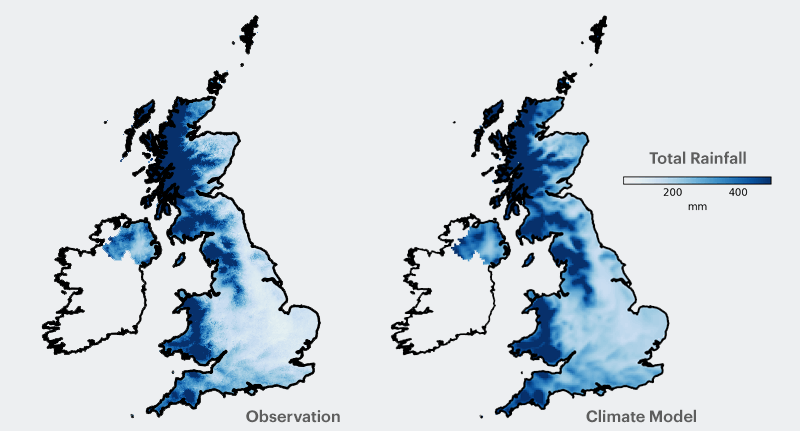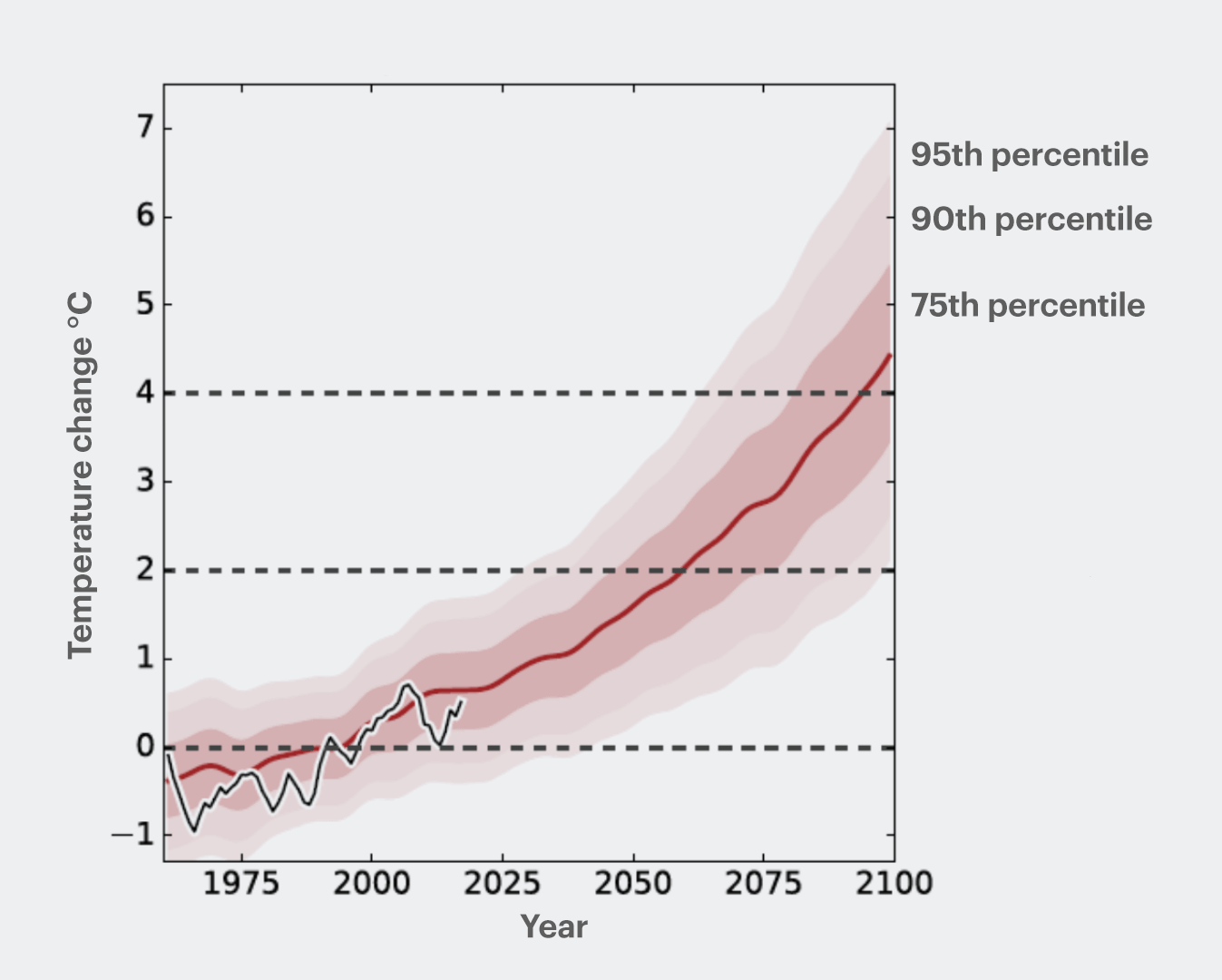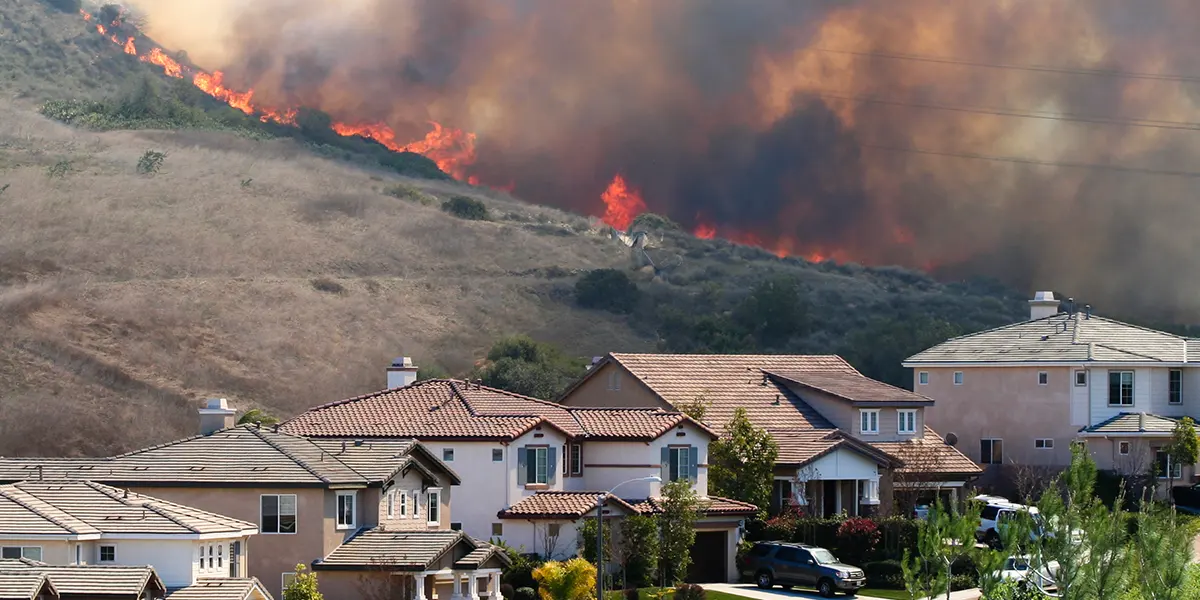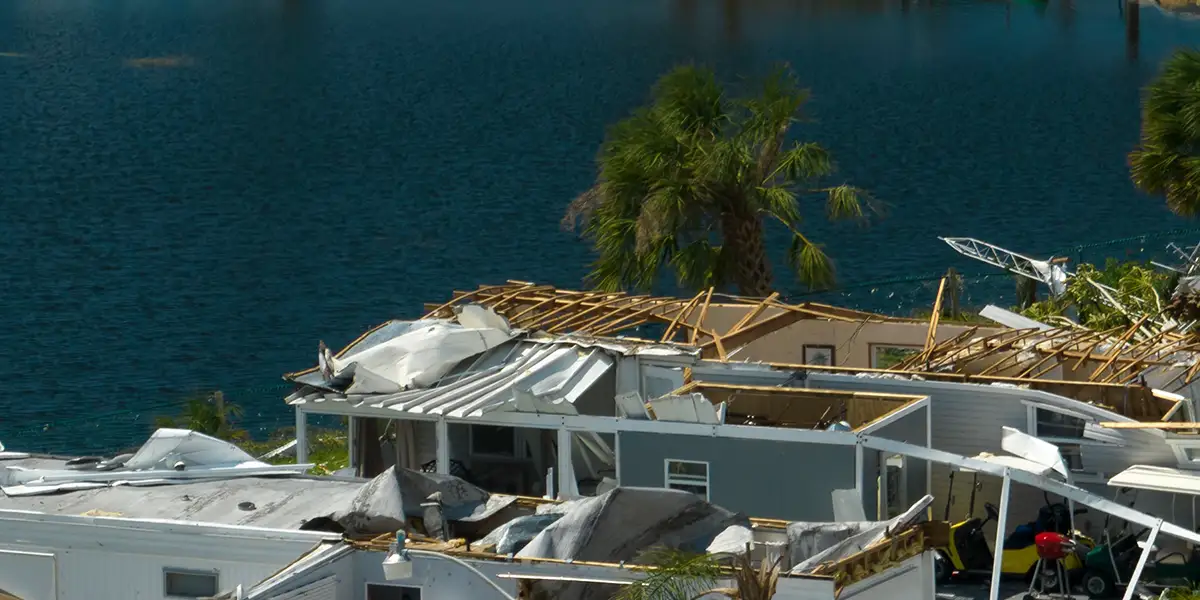Part of the fun of being science lead at Climate X is I get to meet clients and talk to them about science. When we’re onboarding new clients and users of our data we really like to make an effort to make sure they understand what our data is, how it’s made and what it can be used for. What we’ve achieved science-wise in such a short amount of time is really outstanding from an academic point of view – I’m really proud of that, and I really love talking to people about our science (peer-reviewed scientific journal papers and easy-to-read summaries of all that are coming soon).
One of the first things that gets discussed in these sessions is climate models. I’m discovering that the finance and banking sector is not very well versed in climate modelling yet, and understandably so. This usually means that very few people in the room at our onboarding sessions know what a climate model is, or does, or can tell us, and how it’s different from the capital, IFRS9 provision or stress testing models that they’re familiar with.
More surprisingly, every time I cover this topic, more time is spent talking about what a climate model is not. So here’s a crash course in the fundamentals of climate modelling for the uninitiated – don’t be afraid, I’ve done this before.
What a climate model is
A physically realistic representation of the state of the atmosphere under given conditions at a given time. Global climate models typically simulate the atmosphere using historical observations of the state of the planet as a starting point and apply the laws of physics to project how it will evolve – like a digital twin of the Earth on a large scale.
To build a climate model you need hundreds of scientists, working together to code up the laws of physics and certain historical observations about things like emissions and land use change. Then you need a supercomputer for about a year to run the calculations. A modern global climate model will output numerous weather variables (temperature, rainfall, wind, pressure, cloud cover, etc) at hourly, daily or monthly intervals, everywhere in the world.
Because of the computation requirements of simulating the whole planet all at once, there are often limitations on what a climate model can do in terms of resolution – global models typically have a resolution (grid) of 50km. This is too coarse to see a lot of detail in terms of weather, so sometimes a region within a global model can be restimulated at a smaller scale to get more detail. Usually, these dynamically downscaled simulations will cover a continent, and this can give us detail down to 10-25km. In the case of our favourite model, we get 2.2km resolution grid over the UK.
Easy part – done! Now for the fun bit!
WHAT A CLIMATE MODEL ISN’T
A climate model is not a weather forecast
Weather and climate are like a person’s character. The climate is like our atmosphere’s personality; the weather is like its mood on a given day. As the climate changes, the character of the weather changes, and we may see more days where the atmosphere is in a bad mood.
A climate model tells us about the character of the weather. It doesn’t tell us what the weather will be on a particular day in the future, like Sunday 15th May 2050, but it can tell us what the distribution of wet and dry days in the 2050s will be like. Whilst the same laws of physics apply, this is different to a weather forecast. The reason climate models aren’t weather forecasts is two-fold;
- Most climate models are initialised at some point in the past, often at 1900 or even earlier, and they are allowed to run forwards through time in the supercomputer, with the only inputs being the state of the planet at the start of the model run, and the historical greenhouse gas emissions, growth of cities and similar anthropogenic actions between then and now.
The model then runs into the future with a future emissions scenario. This means even for years that have already happened we don’t expect a climate model to get the weather exactly right on every day in the past. But we do expect it to accurately reproduce the character of the historical weather – and we can quantify the accuracy of a climate model by how well it performs in the past. Remember, we don’t tell the model about weather conditions in the past, just the general state of the atmosphere and Earth’s surface at the start of the run. But if we get the physics right, it should give us the right distribution of wet and dry days, or hot and cold days, as it progresses forwards in time through recent history.
Validating climate models is an absolutely vital step in understanding climate risk and impacts – if we haven’t checked that the model works well at reproducing past weather then how can we possibly trust it with our future. Additionally, an individual model performance can vary from location to location and between different weather variables (but that’s a story for another time).

Spot the difference! Historical weather data and historical climate model data – total winter rainfall, averaged between 1980-2000 to smooth out year-to-year variability.
- The atmosphere is full of very complex interactions, often on spatial scales smaller than the grid size of the model. If you think about the butterfly effect – a small change in one place leading to a big impact somewhere else, then you’re in the right ballpark. These interactions are essentially random, in that we can’t presently expend the computational power to model them fully; rather we approximate them with some general equations which describe the large-scale characteristics of these processes, but not the detail of what happens on the small scale.
The models do well at reproducing the character of the weather, but not the specifics on a day-to-day. When looking to the future this means that there are many paths a model can take, even with the same emissions pathway. Fortunately, we can still understand the possible outcomes of this inherent uncertainty by running the model more than once. By producing an ensemble of model runs, all with the same starting point, we can capture the natural random processes and variability in the climate (along with some other interesting things, but that’s another story for another day). With ensemble modelling we can project a range of future scenarios, and say things about the confidence of our projections, depending on the spread of the ensemble of future model outputs.

Confidence on model projections: as we look further into the future the spread on the model projections gets larger. Dark red line shows the mean, different levels of shading show the different confidence levels. The black line shows the historical observed trend.
A climate model is not a flood model
Nor is it a subsidence model, or a coastal erosion model or a landslide model. Climate models can tell us about the potential changing frequency or intensity of future rainfall; but extreme rainfall is not the same as a flood. We may be able to see changes in annual or daily rainfall, but this doesn’t tell us where the water ends up – most climate models can’t tell you where flooding will occur (obviously there are exceptions, but that’s another other story for another day). Using climate models on their own to understand flooding can be misleading, especially without local knowledge of the weather or what’s on the ground. A 50% change in total annual rainfall might sound like a lot, but imagine you lived in a desert where the annual total rainfall was 10mm – it would make no difference. Conversely, if you have a 2% change in maximum daily rainfall in the wettest part of the UK…
Things can get even worse if you are using a very coarse resolution model, without any understanding of what is where on the ground. You could easily under or overestimate the risk to individual assets if you only look at the rainfall. To really understand and quantify flood risk you need to have a flood model, including all the information about the shape and composition of the ground in the areas where the rain is falling. To get accurate asset-level risk metrics, your flood model must have an accurate representation of the physical space where it is located.
A climate model isn’t a statistical model
Hopefully, that’s pretty clear at this point. Climate modelling isn’t assuming and sampling statistical distributions, it’s real physics! As I have learned in the past year, this makes climate models different from the kind of modelling that the finance sector is used to.
Take-home points
-
A climate model is a way to understand the general state of the weather in the past, present and future; and they can be very accurate.
-
A climate model is not a crystal ball for telling you what day in 2046 you should pack an umbrella, or a canoe, to work.
-
Climate models on their own can’t tell you everything about impacts; the weather might be the source of catastrophe, but you need to combine it with a hazard model to really understand and project risk.
-
You cannot accurately project future climate risk without a physics-based climate model; it is a powerful, and absolutely vital tool, for quantifying climate impacts. This type of modelling is different and distinct from statistical modelling.





